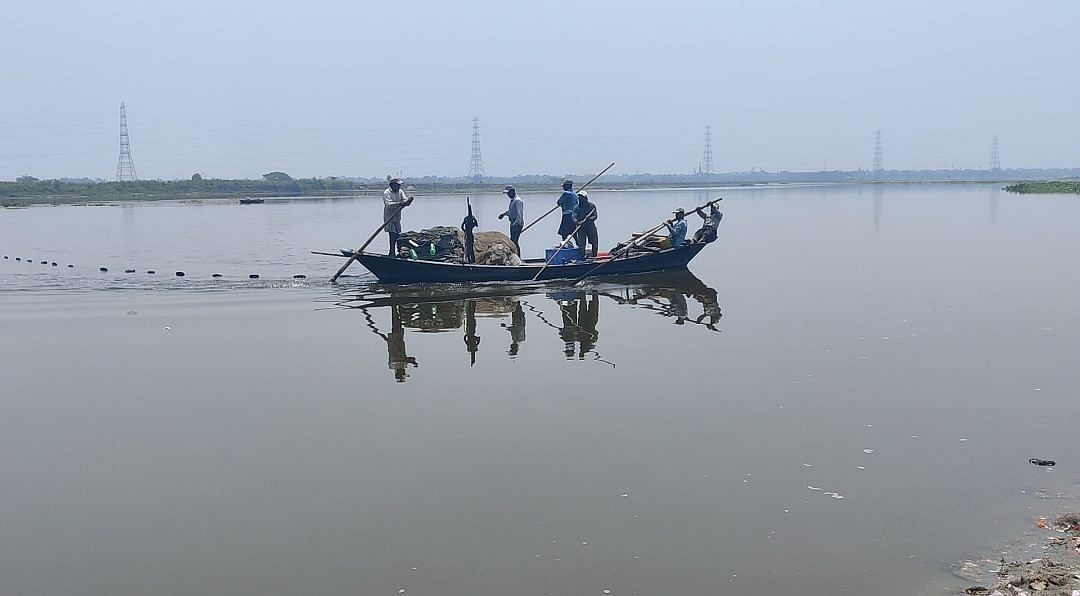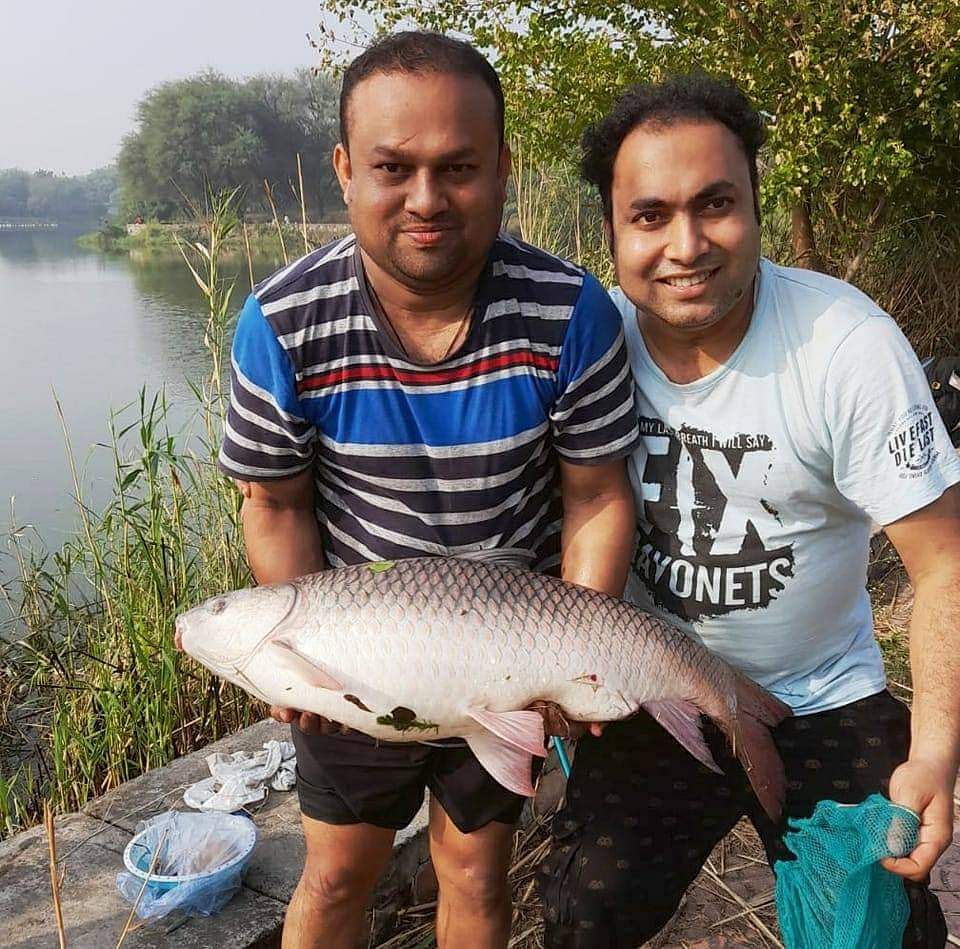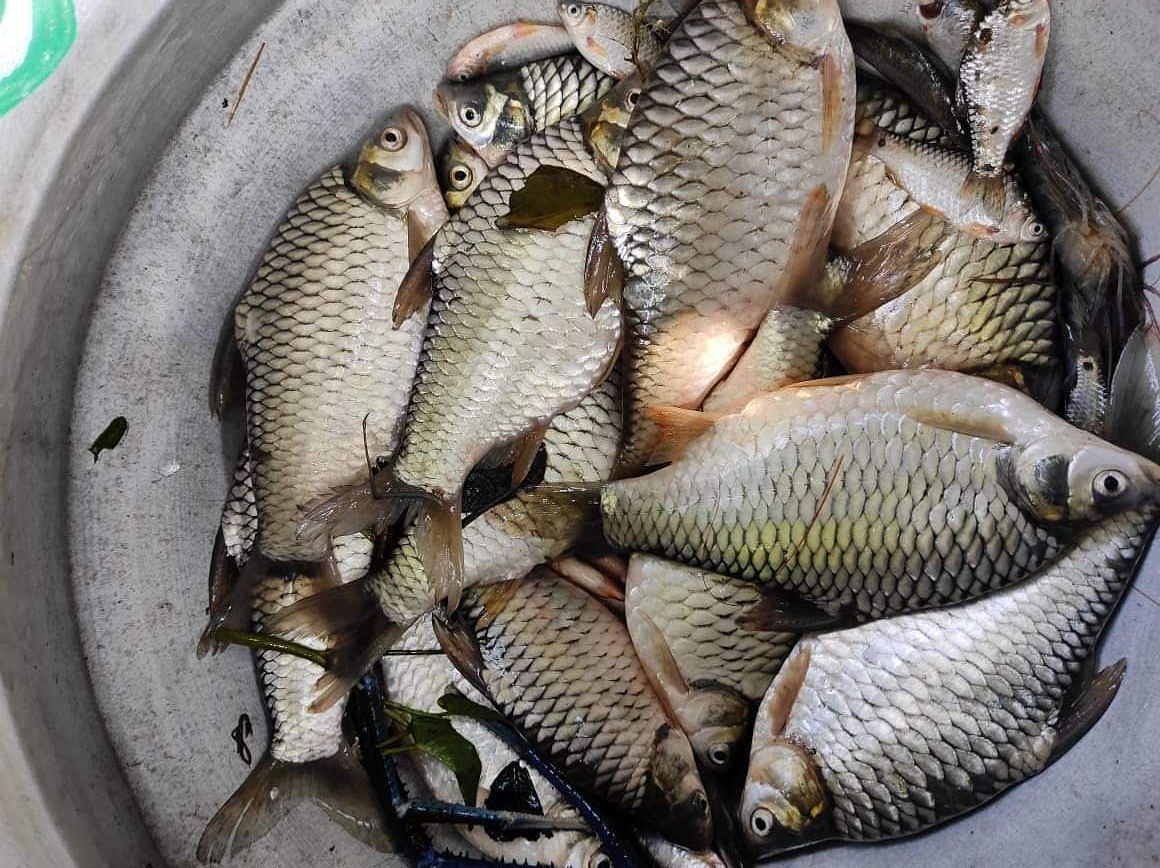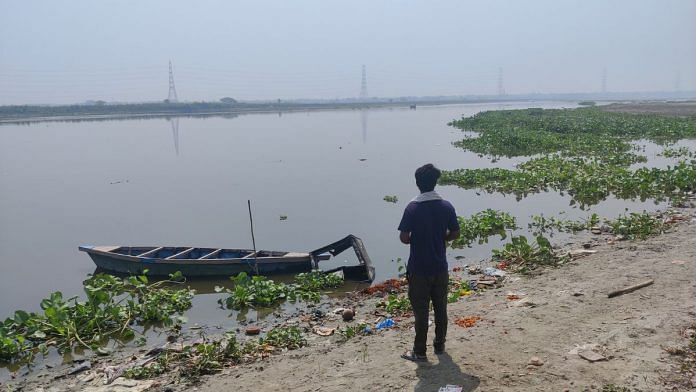New Delhi: A dozen fishermen unfurl their nets and drag them through the trash-strewn waters on the northern banks of Delhi’s Yamuna River. If it’s a good haul, they’ll find magur, puthi and on the rare occasion, freshwater bachua, wiggling in the mess of plastic bottles, metal scraps, discarded flowers, incense sticks and puja waste from crematoriums along the ghats.
Every year, the Delhi government issues fishing licences but now it wants the community to stop fishing due to rising toxicity and depleting aquatic life. But fisherfolk are not ready to give up the profession they’ve inherited from their fathers and grandfathers. They’re also fighting a larger battle—for identity, respect, and a cleaner Yamuna.
“Most senior officers do not even know that Delhi has fishermen,” said Gungun Kumar (37) who lives in a fishing colony in Sonia Vihar. Every year, he goes to the Delhi Development Ministry’s office to renew his licence only to be met with disbelief and disdain.
According to government records, the fisherfolk in Delhi are ghosts. Their licences don’t recognise them as professional; those fishing for leisure get the same one. And so, they are not entitled to government benefits like their counterparts in other states such as Gujarat, Tamil Nadu and West Bengal. And what good is a fishing licence when the river is dying, said Kumar. It’s a question licence-issuing officials ask them derisively when they queue up with their documents.
Now, a few fisherfolk are using Facebook, YouTube and WhatsApp to tell the city that they exist. They want to reclaim their identity, keep their skill from dying out, and reach consumers directly.
“Every few years, some part of the river gets closed for fishing. The pollution levels are so high now that the fish population is also going down,” said Mahendra Singh Halder from northeast Delhi’s Jagatpur, a colony of fisherfolk. He pulls his boat to the shore, as he speaks. He built it himself with wooden planks, made compartments for his catch, and painted it green.

Business is most profitable from March to June. The water is shallow at this time of the year, but that helps them gauge the fish clearly. This won’t last. For the profession to revive, the Yamuna has to thrive once more.
“The government, experts and fisherfolk, everyone must join hands. This is the only way,” said Halder.
Also read: Is Yamuna ready for aartis like Kashi & Haridwar? Turn the drain into a river first
Fighting for recognition
Most of the fisherfolk at the colony in Sonia Vihar have moved on to other professions. They are labourers, drivers, factory workers and small-time entrepreneurs. But they haven’t put down their nets or boats. Every summer before the monsoon, they make it a point to trawl the Yamuna for fresh catch.
The narrow lanes of the colony reveal glimpses of their love for the profession. Kumar, who is now a house painter, has buckets of paint lined up at the entrance of his house. Alongside them are piles of fishing nets and hooks, waiting to be used.
Most senior officers do not even know that Delhi has fishermen
— Gungun Kumar, fisherman
But the Delhi government wants them to stop. The river is becoming too toxic. According to officials, fishing is banned in the Delhi section of the Yamuna because of this. There are also fears that continuous fishing will deplete aquatic life and hasten the deterioration of the river.
“Yamuna in Delhi is in a fragile state. The government is trying to revive it. If you allow fishing, this will create a further imbalance. We are encouraging these fishermen to move away from fishing in the Delhi part of Yamuna,” a senior official from the Delhi government told ThePrint. They want to end the practice in phases.
Delhi’s fisherfolk are not ready to give up so easily. They’ve taken the fight to social media.
Debbrata, a fisherman from Delhi’s Swaroop Nagar, runs a Facebook page, Delhi Fisherman, where he posts videos of fishing techniques. He also displays the catch of the day and teaches the dos and don’ts of “responsible fishing”. In his latest video, he shows viewers how to catch a rohu fish with a single hook. In another he gives tips on how to hook a catfish, in a third he gives a behind-the-scenes peek into fishermen sorting their catch. Since he started the Facebook page two years ago, he’s amassed around 2,100 followers. His YouTube channel—Dev Fisher—has a collective viewership of over 3 lakh.
“This is my attempt to keep the profession alive. Another aspect of this is that I can monetise the channel. Fishing alone is not enough to feed your family. This helps me do what I love, while earning a few extra bucks,” he said.

Subhendu Sarkar, another fisherman, advertises his daily catch on his social media accounts, including WhatsApp. This allows him to sell the fish he catches the same day. And he’s never short on customers. It also saves him the cost of storage.
“I have a few delivery agents who deliver fish all across Delhi-NCR,” he said.
Also read: Delhi’s ‘lifeline’ Yamuna is drying up. Here’s how govt can combat water crisis
No government help
At Jagatpur, local communities assist fisherfolk to keep the river healthy. Market associations and political and religious groups reserve some river sections throughout the year to feed fish. There’s a tacit understanding that there will be no fishing in these sections. This helps maintain a healthy population and prevent overfishing.
Many also provide information on clean fishing pockets along the river and the type of fish available.
“These fishing families have been staying here for decades. Many of us grew up together. As a community, we owe it to them and the river. Even if the government turns their backs,” said Manohar Lal Yadav, a local social activist.
Delhi’s fisherfolk do not benefit from any central government fishery schemes such as Blue Economy and the Pradhan Mantri Matsya Sampada Yojana. Under these schemes, fishermen are provided with equipment, training in advanced techniques, fish transportation facilities and upgradation of their fishing vessels. During the lean months, they get assistance to earn a living and nutritional support. And most importantly, they are entitled to insurance.
Yamuna in Delhi is in a fragile state. If you allow fishing, this will create a further imbalance.
— a senior official from the Delhi government
But these are not available to Delhi’s fishing community, even though the government continues to issue licences. An annual licence costs Rs 300, not including registration and non-refundable professional fees.
“Some take seasonal licences, but most of us go for the annual fishing licences due to convenience. The licence terms specify the areas open for fishing and the times of the year when fishing activities would be restricted,” said Kumar.
Shrinking catch
For all their effort to reclaim their identity, fishing is no longer a viable means to earn a living. Most of them are not tech-savvy to sell their catch on WhatsApp or showcase their skills online. But they’re not ready to give up their inherited professions.
“We come from a family of fishermen. My wish is that at least my children know their tradition and are proud that I tried to preserve it. We will not let our skills die so easily. We will keep trying to get our demands to the government,” said Halder.
Most of the fisherfolk can trace their roots to West Bengal and Bihar. Their parents or grandparents migrated to Delhi for better employment opportunities, and settled along the banks of Yamuna—Burari, Sonia Vihar, Okhla—and continued their family profession. Back then, the catch was good, and the fish rates in local markets were higher than what they got in their villages.
We come from a family of fishermen. My wish is that at least my children know their tradition and are proud that I tried to preserve it.
— Mahendra Singh Halder, fisherman

Reminiscing about his fishing days with his father, Halder stretched his arms to show how large a single fish used to be.
“Some would be as big as an arm’s length. All you needed was to catch a few of those, and you would get a good price for them,” said Halder. Until around eight years ago, a kilo of catfish would get them Rs 200.
Now, all they get are small-sized varieties. Most of these are sickly and full of gunk and plastic. Their customer base is also shrinking daily. At peak season, each boat catches anything between five to 15 kgs of fish, which they sell to local customers for as little as Rs 30 a kilo.
“When we cannot sell the catch the same day, we distribute it amongst ourselves,” he added.
Also read: Rameswaram’s fisherfolk furious with Katchatheevu politics. ‘Don’t want island, just fishing rights’
Toxic Yamuna waters
After the monsoon months, water levels decline, and white toxic froth takes over the river water. The shore becomes a graveyard of fish—scores of them, unable to survive in the polluted water, are found buried in sand. These dead fish are scooped out, cleaned, and sold. The sellers do not vouch for their quality.
The Centre already has a ‘detox’ plan for the Yamuna under the Namami Gange Programme. Around 13 projects worth Rs 2,419 crore have been sanctioned to reduce pollution in the river.
But its implementation is lax. A 2021 Union Jal Shakti Ministry report highlighted that the Yamuna has almost no fresh water downstream of the Wazirabad barrage. The river has a critical path of 22 km in Delhi, where 18 major drains discharge into it.
A Delhi Pollution Control Committee report from 2021 shows that Delhi’s estimated sewage generation is about 3,273 million litres per day (MLD), while the installed sewage treatment capacity is only about 2,715 MLD.
The biochemical oxygen demand (BOD) of Yamuna—the amount of dissolved oxygen consumed by aerobic bacteria—is about 2.0 mg/l at the entry point of Delhi (Palla). By the time the water reaches downstream of Wazirabad barrage to Okhla, the BOD of Yamuna increases to 4.0-40 mg/l. Such levels are extremely toxic, they indicate that there is not enough oxygen for other aquatic life.

Experts said that Yamuna is a victim of the city’s poor water and sewage management.
Rajendra Ravi, founding member and programme coordinator at the People’s Resource Centre (PRC), an organisation working with fishermen in the capital said that encouraging activities like fishing and agriculture can help reduce pollution levels in the river and improve the city’s overall ecology.
“These fishermen have been trying to get a cooperative society status for years. If that happens, they will be able to set up authorised fish markets in the city. They will also be able to add fish seeds to the water to increase the number of fish in the river. A healthy aquatic life can help restore the river life,” he said.
Halder usually spends a couple of hours during fishing season trawling the Yamuna. By evening, the boats return to the shore with baskets of the day’s catch. Halder surveyed the haul.
“Today, we got lucky. The catch is good. We should be able to make at least Rs 2,000 selling these,” he said.
(Edited by Theres Sudeep)






